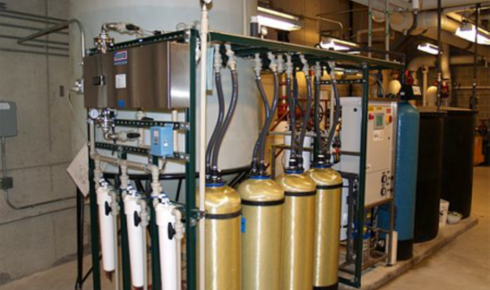There’s something oddly fascinating about water. On the surface, it seems simple—just H₂O, right? Yet when you peel back the layers, you quickly realise that not all water is created equal. If you’ve ever run a business that depends on highly purified water—whether it’s a laboratory, a medical facility, a food processing unit, or even an industrial plant—you already know how critical water quality can be. Regular tap water simply doesn’t cut it. That’s where deionization (DI) systems step in.
But let’s go deeper. Why is deionized water so important? What makes these systems tick? And, most importantly, what do businesses need to know before making the investment? Let’s walk through it in a way that’s both technical enough to give you clarity, and casual enough so it doesn’t feel like a chemistry lecture you slept through back in school.
Understanding Deionized Water in Everyday Terms
At its core, deionization is just the process of removing dissolved salts and minerals from water. Think calcium, sodium, chloride, iron—all those microscopic hitchhikers riding along with every drop from your faucet.
Now, in daily life, you might not notice them. In fact, some of those minerals are even considered healthy to drink. But in a commercial setting—say, when you’re cleaning surgical instruments or manufacturing delicate electronics—those minerals are downright troublemakers. They leave residues, mess with sensitive machinery, and can alter the chemical balance in processes that demand precision.
This is why DI water is sometimes described as “hungry water.” With ions stripped out, it wants to bind to anything it can, which makes it remarkably effective for rinsing, cleaning, and maintaining contamination-free systems.
A Closer Look at Deionization Systems
So how does it actually work? At the simplest level, a DI system runs water through special resins—positively and negatively charged beads that attract and trap ions. It’s a bit like running a magnet through a pile of nails and dust: the nails stick, the dust keeps flowing.
The result? Clean, ion-free water ready to serve in industries where purity isn’t just a preference, it’s a necessity.
And here’s where providers step in with tailored solutions. For example, the Clean H2O Pros deionization system is designed specifically for businesses that can’t afford guesswork when it comes to water quality. These setups are engineered to deliver consistent, reliable purity, which takes away the headaches of managing inconsistent tap or municipal supplies.
The Real-World Benefits for Businesses
The advantages of switching to DI water are more than just technical jargon. Let’s ground this in the day-to-day realities businesses face:
- Fewer production hiccups: Imagine running a bottling plant only to discover mineral buildup clogging your equipment. Downtime costs money—DI water helps avoid that.
- Better compliance: Many industries have strict water quality regulations. A DI system ensures you don’t end up on the wrong side of an inspection.
- Longer equipment lifespan: Minerals corrode and scale up machines. Removing them means your gear lives longer and requires fewer costly repairs.
- Improved outcomes: Whether it’s smoother surfaces on electronics, safer sterilisation in medical labs, or cleaner ingredients in food production, DI water enhances results.
In short, it’s one of those behind-the-scenes investments that quietly supports everything else.
What About the Cost Factor?
Let’s be honest: no business decision escapes the cost conversation. Installing a DI system isn’t like buying bottled water—it’s an infrastructure decision. And while the benefits are huge, the upfront and ongoing costs vary.
A major question business owners ask is: what do commercial deionization systems cost? The truth is, there’s no one-size-fits-all answer. Pricing depends on several factors:
- The size of your facility and water demand.
- Whether you need portable exchange tanks or a permanent system.
- Maintenance contracts and resin replacement schedules.
- Additional filtration or purification steps combined with DI.
On the low end, smaller systems for light industrial use might run in the thousands, while large, high-capacity units for heavy-duty operations can stretch well into six figures. But the right way to view it is as a long-term investment that prevents expensive downtime, regulatory fines, or product failures.
Comparing DI to Other Purification Methods
You might be wondering: why not just rely on reverse osmosis (RO) or distilled water? Both are excellent purification methods, but they don’t always deliver the same results as DI.
- Reverse Osmosis: Great at removing a broad range of impurities, but not always sufficient for applications demanding absolute ion-free water.
- Distillation: Effective, but energy-intensive and often slower.
This is where DI water systems stand out. They are efficient, scalable, and can be combined with RO or UV treatments for maximum purity. Many businesses actually use RO to handle the bulk of contaminants, followed by DI to polish the water to its highest standard. It’s a tag-team approach that balances cost and performance.
The Human Side of Water Quality
Here’s something we don’t talk about enough: peace of mind. Business owners already juggle enough variables—supply chains, staff, regulations, competition. Water shouldn’t be one of those unknowns.
Installing a proper deionization system takes one big worry off the table. You know that every gallon of water running through your process is consistent and reliable. No second-guessing, no scrambling when something goes wrong.
It’s a bit like knowing your car has fresh brakes and good tyres. You don’t think about it every day, but you sleep better knowing you’re safe on the road.
Practical Tips for Businesses Considering DI
If you’re at the stage where you’re seriously weighing DI for your facility, here are a few things to keep in mind:
- Assess your actual water needs. Don’t overspend on capacity you’ll never use, but don’t undershoot and end up with a system that can’t keep up.
- Consider hybrid solutions. Pairing DI with RO often saves money and resin replacements.
- Work with a trusted provider. Not all systems are created equal, so partner with vendors who have proven industry expertise.
- Plan for maintenance. The system is only as good as its upkeep—schedule resin changes and regular checks.
- Think long-term. Frame the cost in terms of the savings and stability it brings over time.
Wrapping It Up
Water is the kind of thing most of us take for granted—until we can’t. For industries where every detail matters, from a semiconductor’s microscopic circuits to the sterile field of an operating room, water quality becomes the silent backbone of success.
Deionization systems aren’t glamorous. They don’t make headlines. But they quietly ensure that businesses can run smoothly, products meet quality standards, and equipment lasts longer.
If you’re on the fence about making the switch, ask yourself this: what’s the cost of not having consistent, pure water? For many, the answer makes the decision pretty clear.

